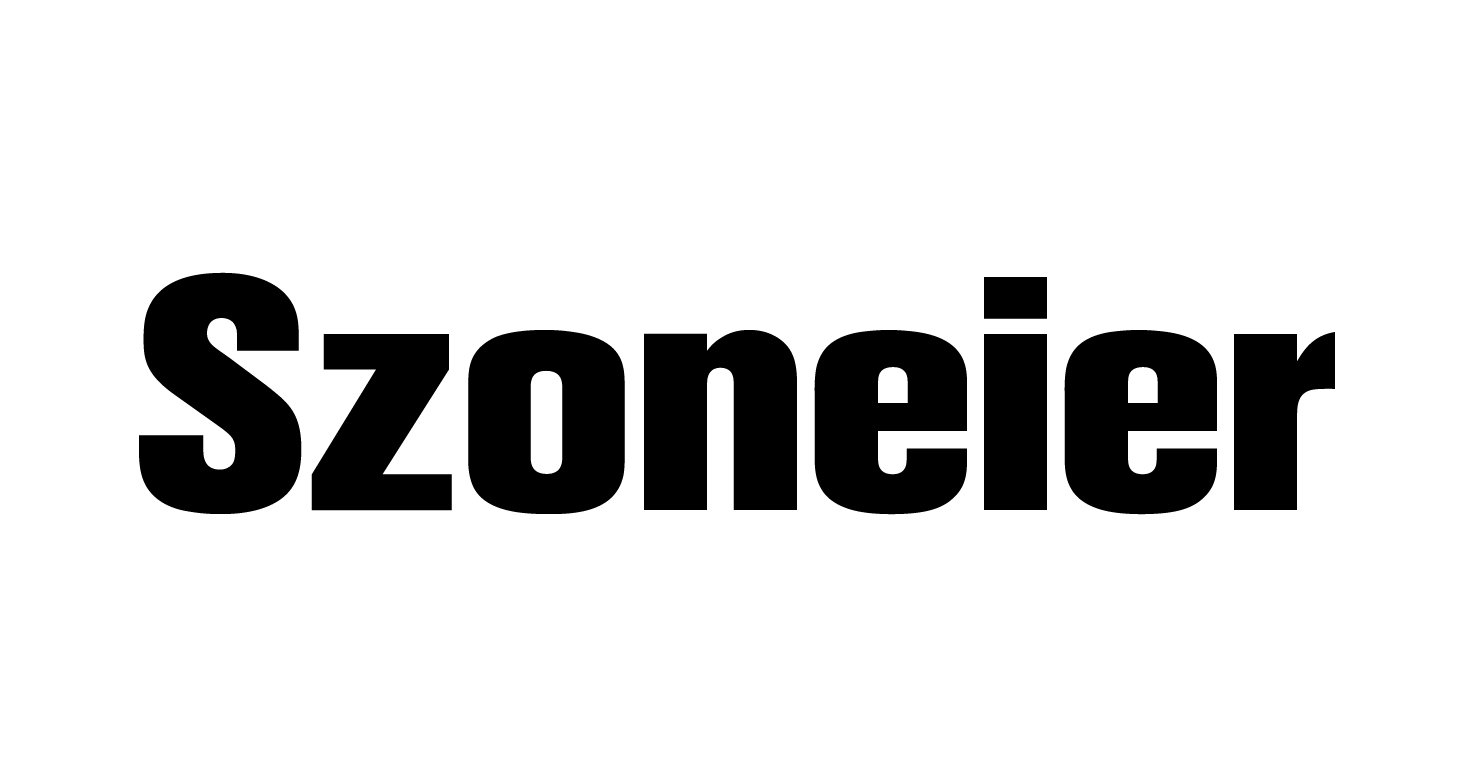Canvas fabric isn’t just for tote bags and painting backdrops anymore. In today’s high-performance industrial environments, this time-tested textile plays a crucial role across manufacturing sectors—from protecting machinery in harsh conditions to forming the structural body of heavy-duty tents. The rise of coated, treated, and engineered canvas has made it one of the most flexible materials for industrial product design and production.
Canvas fabric is widely used in manufacturing industries for producing protective covers, tents, tarpaulins, automotive parts, marine gear, and construction wraps due to its strength, breathability, and ability to be treated for waterproofing, UV resistance, and flame retardancy.
What sets canvas apart is its ability to adapt. From rugged cotton duck to coated polyester canvas, its variations serve sectors as diverse as construction, transportation, and marine. If you’re developing industrial-grade gear, chances are canvas has already made its way into your supply chain—even if it’s hidden behind a waterproof coating.
Let’s explore exactly why canvas remains a favorite material among industrial manufacturers—and how it’s evolved to meet modern demands.
What Makes Canvas Fabric Suitable for Industrial Manufacturing?
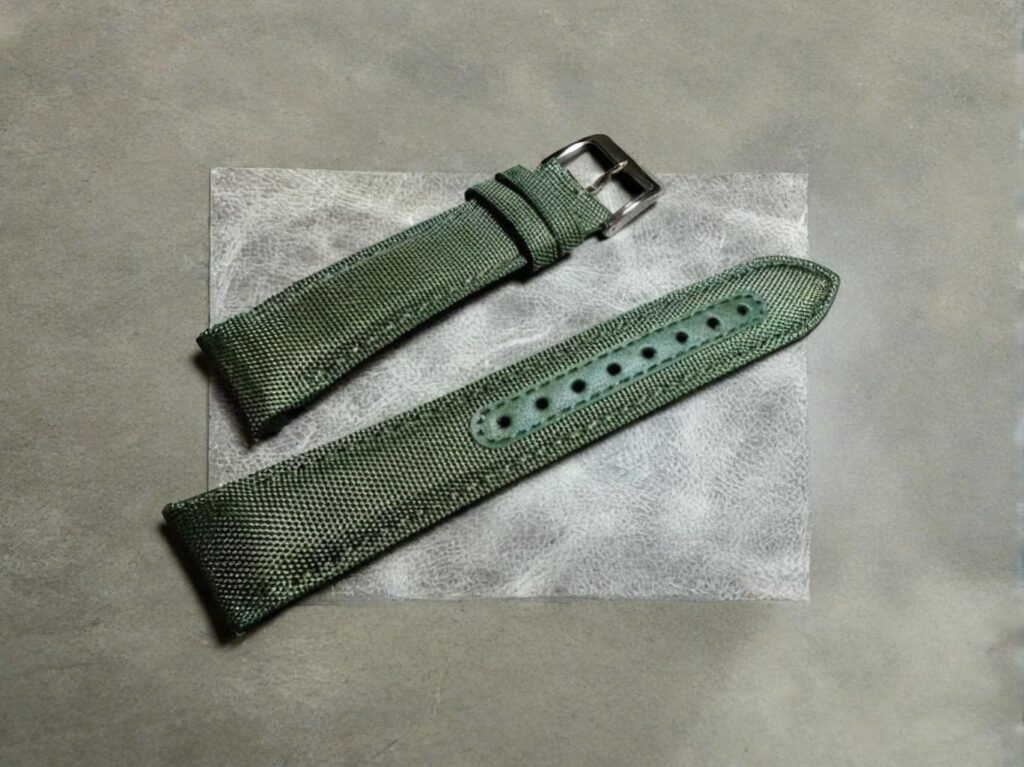
Canvas fabric remains one of the most trusted and adaptable textiles in the industrial sector, not because it’s “traditional,” but because it offers a rare balance of strength, adaptability, and environmental resilience that few materials can match. Whether in construction, transportation, marine, or manufacturing environments, canvas can be engineered to withstand demanding use while meeting strict safety and performance requirements.
Unlike many purely synthetic fabrics that excel in one property but fail in others (e.g., PVC is waterproof but traps heat, nylon is strong but degrades under UV), canvas offers a customizable foundation. It can be woven from natural fibers, synthetic fibers, or blends, then enhanced with treatments to achieve precise technical performance.
Why Industrial Buyers Rely on Canvas
Canvas is suitable for industrial manufacturing because it combines high tensile strength, abrasion resistance, and compatibility with advanced coatings such as waterproofing, UV stabilization, and flame retardants—making it ideal for heavy-duty, long-term applications.
Material Strength and Structural Advantages
| Property | Description |
|---|---|
| Weave Type | Predominantly plain weave, which evenly distributes stress while allowing flexibility |
| Yarn Strength | High-tensile cotton, polyester, or poly-cotton blends engineered for industrial loads |
| Thickness Range | From 8 oz to over 20 oz per square yard, balancing manageability and performance |
| Tear Resistance | Enhanced with ripstop patterns or double-weave structures to prevent seam failures |
| Abrasion Resistance | Superior surface durability against friction, ideal for repetitive-use products |
💡 Engineering note: The plain weave structure allows canvas to fold without breaking fibers while maintaining enough rigidity for structured covers and panels.
Performance Enhancement & Specialty Treatments
| Treatment Type | Benefit | Industrial Applications |
|---|---|---|
| PU Coating | Flexible waterproofing, oil resistance | Truck covers, machinery tarps |
| PVC Coating | Maximum waterproofing + flame retardancy | Heavy-duty tarpaulins, marine enclosures |
| FR Treatment | Meets CPAI-84, NFPA 701, EN 13501-1 | Welding curtains, event tents |
| UV Coating | Reduces fiber degradation under sunlight | Outdoor awnings, construction covers |
| Mold/Mildew Resistance | Prevents biological damage in humid/marine zones | Boat covers, storage tarps |
Industrial-Grade Canvas by Weight
| Weight (oz/yd²) | GSM Approx. | Ideal Use |
|---|---|---|
| 10 oz (~340 GSM) | Lightweight, easy to sew; ideal for aprons, light tool rolls | |
| 14 oz (~475 GSM) | Mid-weight for tarpaulins, machine covers, and event canopies | |
| 18 oz (~610 GSM) | Heavy-duty for welding curtains, truck sidewalls | |
| 20 oz+ (~680+ GSM) | Ultra-heavy for marine-grade covers, structural tents |
📌 Tip: Coatings can increase the “handling weight” by 5–15%, which affects sewing machine tension settings and packaging volume.
Environmental & Operational Advantages
- Breathability → Allows air circulation, reducing condensation inside covers and shelters.
- Thermal Stability → Retains flexibility in both hot and cold environments (unlike PVC, which can stiffen in winter).
- Customizability → Can be dyed, printed, laminated, or reinforced without losing base integrity.
- Sustainability → Natural cotton canvas is biodegradable, and recycled polyester blends reduce waste footprint.
Real-World Application Insight
A German machine tools manufacturer replaced synthetic dust covers with 14 oz PU-coated poly-cotton canvas. Results after 12 months:
- Breakage rate dropped by 38% compared to synthetic covers.
- Covers maintained shape and coating integrity despite constant folding/unfolding.
- The switch contributed to a higher sustainability rating in their EU supplier compliance audit.
Why Canvas Wins in Industry
- Strength + Flexibility → Withstands heavy loads but adapts to different shapes.
- Superior Breathability → Prevents trapped heat and moisture, extending the life of covered equipment.
- Cost-Efficiency → Especially competitive in mid-weight, long-service-life applications.
- High Customization Potential → From GSM to coatings, colors, and reinforcements.
- Proven Track Record → Used successfully for centuries, yet adaptable to modern safety and performance standards.
Which Industries Rely Most on Canvas Material in Their Production Lines?
Canvas fabric has quietly earned a permanent seat in global manufacturing by solving problems that range from structural protection to long-term outdoor exposure. It’s not a niche textile—it’s a cross-industry workhorse that supports supply chains from agriculture fields to shipyards, and from construction sites to luxury event venues.
While synthetics may dominate certain sectors, canvas maintains its position by offering a combination of tensile strength, custom treatment compatibility, and eco-friendly sourcing options. This makes it not only a practical choice, but often the most cost-efficient over a product’s entire lifecycle.
Core Industries & Their Canvas Applications
| Industry | Application Type | Canvas Role & Advantages |
|---|---|---|
| Construction | Scaffolding wraps, welding curtains, tool pouches | Fire-resistant (FR-treated), tear-proof, weather-shielding in high-wind zones |
| Automotive | Seat covers, tool rolls, RV awnings, trunk organizers | Washable, structured, abrasion-resistant for daily wear |
| Marine | Boat covers, sail bags, dockside enclosures, fender covers | UV-protected, mildew-resistant, withstands salt spray and humidity |
| Agriculture | Shade cloths, bale covers, equipment haul bags, grain storage liners | Breathable yet protective, UV-treated, reduces crop condensation |
| Logistics & Transport | Truck tarpaulins, pallet covers, equipment bags | Waterproof, reinforced hems, high strength-to-weight ratio |
| Events & Hospitality | Custom tents, canopies, decorative drapes, stage backdrops | Printable for branding, flame-retardant for safety codes |
| Mining & Energy | Blast curtains, equipment covers, site shelters | FR + oil-resistant coatings, resistant to abrasive dust |
| Military & Defense | Tactical gear covers, tent systems, transport wraps | Camouflage printing, infrared suppression coatings |
Case Study – Construction Scaffold Covers in Canada
A major Canadian high-rise contractor required 18 oz flame-retardant canvas panels for winter scaffolding enclosures. Challenges:
- Operating at 20°C with wind gusts above 70 km/h
- Meeting CPAI-84 fire safety standards for urban construction sites
- Reusability across multiple projects to reduce waste and costs
SzoneierFabrics Solution:
- PU-coated poly-cotton canvas with reinforced grommet edges
- Seam welding for maximum strength at stress points
- Shipped within 21 days to meet project start date
Results: The wraps lasted three full contract cycles (18+ months) without tears or coating failure—saving the client over 30% in replacement costs.
Sector-Specific Technical Priorities
- Construction → FR compliance, reinforced hems, wind-load testing
- Marine → Saltwater corrosion resistance, UV stability over 1000 hours
- Logistics → Lightweight yet tear-resistant, rapid deployment features
- Agriculture → Moisture breathability, pesticide-safe coatings
- Events → High print resolution compatibility, low-glare finish for photography
Why Canvas Stays Relevant in Heavy Industry
It’s not just about fabric strength—it’s about predictability and trust. When a mining tarp must shield equipment worth millions, or a dockside cover needs to survive three typhoon seasons, manufacturers can’t gamble on unproven materials. Canvas offers:
- Proven long-term performance in extreme heat, cold, wind, and salt
- Modular customization to meet sector-specific compliance codes
- Lower total cost of ownership through reusability and repairability
- Sustainability options with organic cotton or recycled polyester blends
How Is Canvas Fabric Used in Making Industrial Covers and Protective Gear?
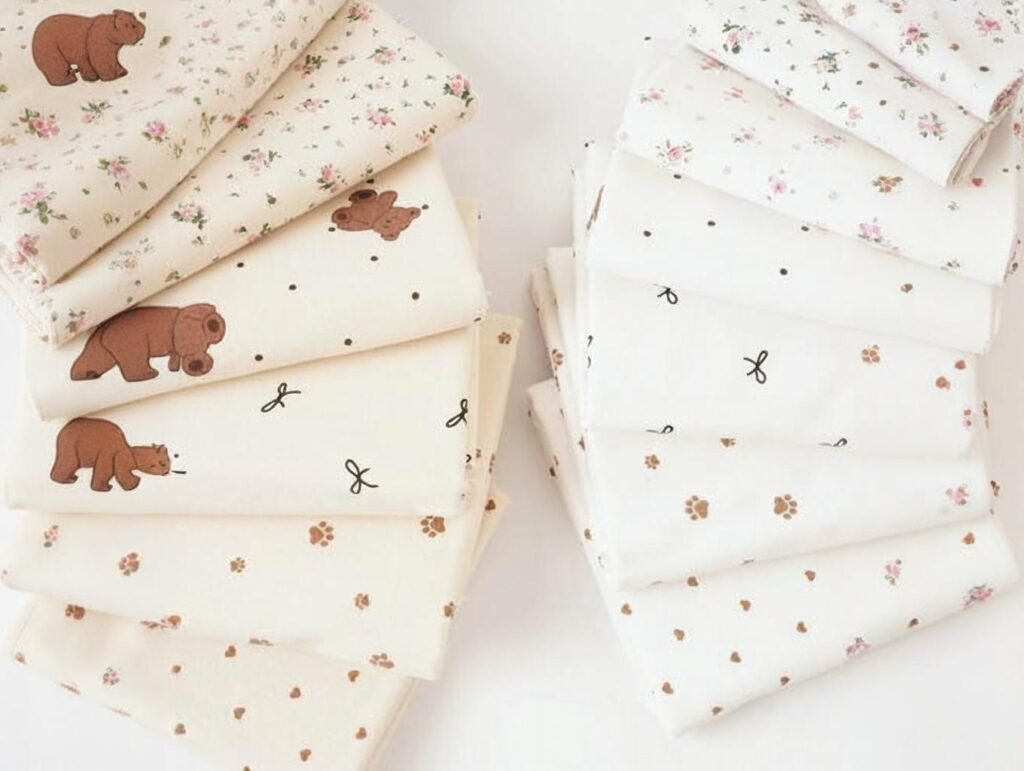
Canvas fabric remains one of the most trusted materials in industrial protection, valued for its ability to combine mechanical strength, adaptability, and long-term durability. In sectors where equipment and workers are exposed to abrasion, heat, moisture, and dust, canvas provides not just a barrier, but a dependable solution that can be tailored to exact specifications.
Its woven structure naturally resists tearing and fraying, while its compatibility with modern surface treatments—like PU waterproofing, acrylic UV coatings, and fire-retardant (FR) chemicals—makes it ideal for demanding applications where safety, compliance, and performance are critical.
Why Canvas Is Preferred for Industrial Protection
- Multi-Season Performance – Maintains flexibility in both extreme cold (without cracking like PVC) and high heat conditions.
- Customizable Coatings – Can be treated for waterproofing, oil repellency, mildew resistance, and flame retardancy.
- High Structural Integrity – Withstands heavy loads, dragging, folding, and repeated handling without significant wear.
- Worker-Friendly Design – Breathable enough for wearable gear like aprons, yet strong enough for stationary covers.
Common Industrial Products Made with Canvas
| Product Type | Recommended Canvas Specs | Special Functional Features |
|---|---|---|
| Machine Covers | 14–18 oz PU-coated poly-cotton canvas | Waterproof, UV resistant, mold-proof for long-term storage |
| Tool Rolls & Gear Bags | 12 oz waxed cotton canvas | Flexible, abrasion-resistant, water-shedding surface |
| Welding Aprons & Blankets | 18–20 oz FR-treated duck canvas | Heat and spark barrier, thermal protection |
| Pallet Covers | 14 oz reinforced poly-canvas | Heavy-duty, reusable, reinforced hems & grommets |
| Hose & Cable Wraps | Ripstop canvas with Velcro fastening | High-tensile resistance, reusable closure system |
| Protective Curtains | 16–18 oz FR poly-cotton canvas | Flame-retardant, dust-blocking in factories |
| Portable Equipment Bags | 12–14 oz waterproof canvas | Mold-resistant, easy to transport |
Functional Benefits of Canvas in Gear Manufacturing
- Abrasion Resistance – Handles continuous contact with metal edges, concrete floors, or rough timber without significant wear.
- Reinforce-ability – Works seamlessly with grommets, rivets, Velcro strips, and double-stitched seams for added strength.
- Shape Retention – Unlike thin synthetics, canvas keeps its structure after extended use, even when exposed to load strain.
- Adaptability to Add-Ons – Accepts reflective tape, printed labels, and clear PVC windows for ID tags or instructions.
- Eco-Friendly Options – Can be made from organic cotton or recycled polyester blends for sustainable manufacturing.
Performance Benchmark: Canvas vs. Other Common Protective Materials
| Feature | Canvas Fabric | PVC-Coated Fabric | Nylon Fabric |
|---|---|---|---|
| Cold-Weather Flexibility | Excellent | Poor (stiff & brittle) | Good |
| Tear Resistance | High | Very High | Medium |
| Heat Resistance | Good (FR-treated) | Moderate | Poor |
| Chemical Resistance | Moderate (coated) | Excellent | Moderate |
| Breathability | Good | Poor | High |
| Average Lifespan in Industry | 2–5 years | 3–5 years | 1–2 years |
| Repairability | Easy to patch & sew | Difficult | Easy |
Real Project Insight – Oil Refinery Engine Block Covers
A UAE-based oil refinery faced sand abrasion, high UV exposure, and frequent cover removal on sensitive engine blocks. SzoneierFabrics designed a custom 16 oz PU-coated canvas with an inner fleece lining to protect painted metal surfaces from scratches. Results:
- Reduced cleaning downtime by 26% within 6 months
- Increased cover service life by 40% compared to previous vinyl-based covers
- Lower total maintenance costs through repairable fabric panels
Human-Centered Design Viewpoint
Canvas in industrial protection is not just about shielding equipment—it’s also about improving work conditions and efficiency for people:
- Welders benefit from heat-resistant aprons that remain breathable in hot environments.
- Factory workers handle tool rolls that resist scuffs and organize gear more effectively.
- Logistics teams use pallet covers that keep products clean without trapping condensation.
When designed with ergonomics, coating technology, and sector-specific hazards in mind, canvas-based protective gear becomes a strategic asset in industrial operations—extending the lifespan of both tools and the people using them.
Do Canvas-Based Tarpaulins and Tents Meet Safety and Durability Standards?
Canvas tarpaulins and tents have evolved far beyond the untreated cotton sheets of decades past. In today’s industrial and public-use environments, they must balance safety, performance, and longevity—often under the scrutiny of strict national and international regulations. Modern treated canvas is engineered to pass fire safety tests, resist harsh weather, and maintain structural integrity over years of use, even in demanding conditions like construction sites, offshore oil platforms, and high-traffic public events.
When sourced from experienced manufacturers, canvas products can be tailored to meet both regional compliance laws and end-user durability expectations, making them a reliable investment for businesses and agencies that require certified, high-performance coverings.
Yes—With Proper Treatment, Canvas Tarps & Tents Meet Stringent Standards
Through flame-retardant treatments, UV stabilization, and waterproof coatings, industrial-grade canvas can meet CPAI-84, NFPA 701, EN 13501-1, and even ISO tensile strength benchmarks. These treatments allow canvas to compete with (and often outperform) many synthetics in safety-critical environments.
Key Standards Relevant to Canvas Tarps and Tents
| Standard Name | Description | Industry Application |
|---|---|---|
| CPAI-84 | Measures flame resistance for tent and awning fabrics | Outdoor events, camping, military tents |
| NFPA 701 | Tests flame propagation in large textile structures | Construction sheeting, stage curtains, event canopies |
| EN 13501-1 | EU classification for fire safety of building/tent materials | Architectural wraps, pavilions, public shelters |
| ISO 13934-1 | Determines tensile strength of woven fabrics | All industrial-grade canvas products |
| REACH / RoHS | Ensures chemical and environmental compliance | EU-focused and eco-conscious markets |
Material Configurations That Pass Compliance
| Application Type | Recommended Fabric Spec | Why It Works |
|---|---|---|
| Construction Tarps | 18 oz FR-treated poly-cotton canvas | Heavyweight fabric resists ignition, tearing, and wind stress |
| Outdoor Event Tents | 14 oz CPAI-84 poly canvas | Balances weight, fire safety, UV resistance, and portability |
| Emergency Shelters | 12 oz waxed cotton duck canvas | Breathable in hot climates, waterproof, low smoke output |
| Truck Side Covers | 16 oz PVC-backed ripstop canvas | Combines high puncture resistance with long-term UV protection |
Case Study – Disaster Relief Shelters
A European NGO operating in cyclone-prone Southeast Asia commissioned 12 oz CPAI-84 FR-treated canvas with PU coating from SzoneierFabrics. Results after deployment:
- 34% reduction in condensation compared to PVC tents in humid regions
- Significantly cooler interior temperatures due to breathability
- Easy patching extended service life beyond 24 months in continuous use
- Passed field safety checks without additional chemical treatment
Durability by Material Weight and Application
| Canvas Weight (oz) | Typical Use | Estimated Lifecycle (with proper treatment) |
|---|---|---|
| 12 oz | Light-duty tents, temporary covers | 2–3 years |
| 14 oz | Mid-duty tarps, event structures | 3–5 years |
| 18 oz | Heavy-duty industrial wraps, long-term installations | 5–7 years |
| 20 oz+ | Military-grade shelters, marine covers | 7–10 years |
Note: Lifespan assumes regular cleaning, proper storage, and reproofing every 12–18 months for waterproofed fabrics.
Critical Industry Insight
While PVC and polyester are sometimes cheaper per yard, they often:
- Crack or delaminate in extreme cold
- Lose tensile strength faster under UV exposure
- Cannot be easily repaired once damaged
Canvas, by contrast:
- Maintains flexibility in low temperatures
- Can be patched and reproofed, extending lifespan
- Offers better breathability, reducing mold and condensation buildup
- Supports eco-friendlier disposal (especially with organic or recycled blends)
Pro Tips for Buyers
- Always request lab test reports for FR, UV, and tensile strength before confirming bulk orders.
- Consider double-stitched or taped seams for tarpaulins exposed to high winds.
- For tents in hot climates, choose breathable FR-treated canvas over solid PVC to improve interior comfort.
- Factor coating type into recyclability goals—PVC coatings are harder to recycle than PU or wax finishes.
Is Canvas Fabric Effective for Automotive and Marine Manufacturing Applications?
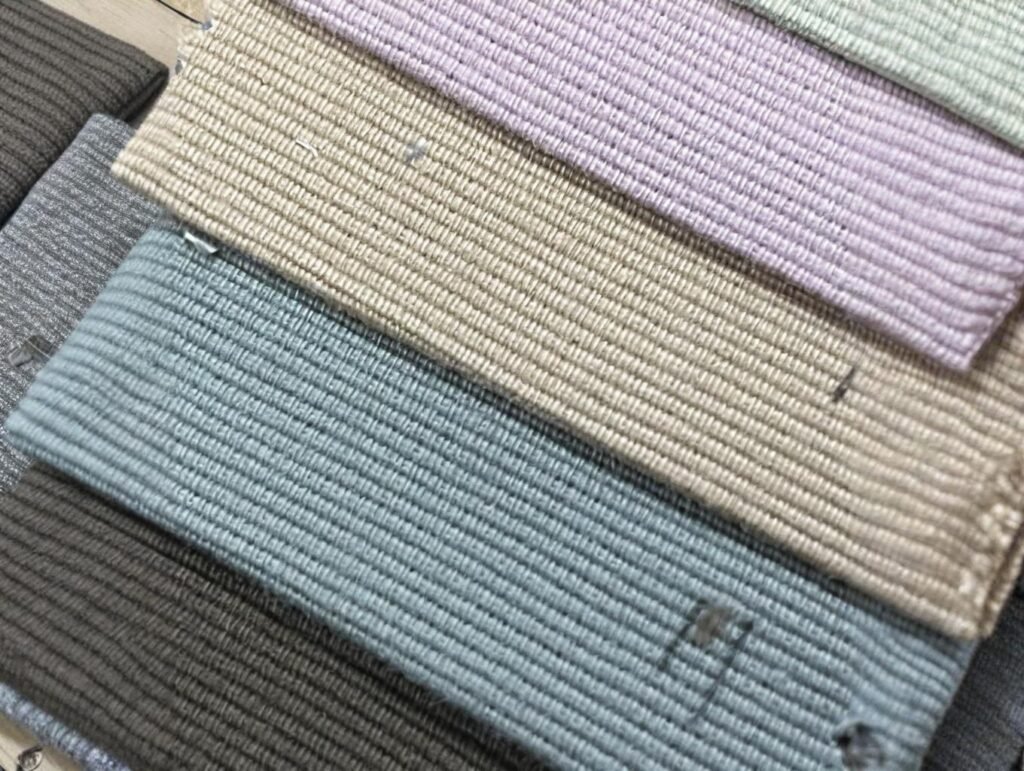
Canvas fabric has earned—and kept—its place in both the automotive and marine manufacturing worlds because it delivers a rare combination of mechanical strength, breathable comfort, and timeless visual appeal. While synthetics like PVC, acrylic, and polyester dominate many mass-production environments, treated canvas still outperforms in certain use cases where long-term durability, easy repairability, and a premium tactile finish are essential.
In these industries, the demands on materials are extreme: constant UV exposure, saltwater corrosion, mechanical abrasion, and temperature swings from freezing winters to scorching summers. Properly engineered canvas—whether pure cotton, poly-cotton, or synthetic-blend duck—can be treated with waterproof, mildew-resistant, flame-retardant, and UV-protective finishes, making it fit for purpose in some of the toughest environments on earth.
Why Canvas Still Excels in Auto & Marine Manufacturing
Canvas fabric is effective in automotive and marine manufacturing because it can be engineered to resist UV degradation, saltwater damage, mildew growth, and heavy abrasion—making it ideal for seat covers, tool wraps, boat covers, convertible tops, and a wide range of protective and aesthetic applications.
Automotive Applications of Canvas
| Product Type | Recommended Canvas Specification | Key Benefits |
|---|---|---|
| Seat & Headrest Covers | 10–12 oz cotton/poly duck canvas | Breathable, washable, abrasion-resistant |
| Trunk Organizers | 12 oz waxed canvas | Water-resistant, flexible, easy to clean |
| Convertible Roofs (Vintage/Classic Cars) | Heavy-duty cotton canvas with rubber or butyl backing | Maintains classic look, weatherproof, sound-dampening |
| Dashboard Dust Covers | Light cotton duck canvas (8–10 oz) | Soft, anti-static, fade-resistant, easy to fold |
| Tool Rolls & Pouch Liners | 12–14 oz untreated or waxed canvas | Tear-resistant, long lifespan, mold-resistant |
Pro Insight: Classic convertible tops and off-road vehicle seat covers often demand double-stitched, marine-grade thread to prevent seam failure under constant stress.
Marine Applications of Canvas
| Product Type | Canvas Specification | Key Features |
|---|---|---|
| Boat Covers | 14–18 oz poly-canvas with PU or acrylic coating | UV-resistant, mildew-proof, waterproof, breathable |
| Sail Bags & Storage Sacks | 10–12 oz cotton or poly-cotton canvas | Lightweight yet durable, breathable to prevent mildew |
| Sunshades & Canopies | UV-treated poly-cotton canvas | Fade-resistant, tension-holding, excellent wind stability |
| Fender Covers | Soft canvas with brushed interior | Protects hull from scratches and scuffs during docking |
| Dodgers & Biminis | Acrylic-coated poly-cotton duck canvas | Water-shedding, marine-grade stitching, UV-blocking |
Marine Maintenance Tip: Even with treatments, annual reproofing can extend the lifespan of marine canvas by 2–3 years in salt-heavy environments.
Why Canvas Remains Competitive in Auto & Marine Sectors
- Natural Look & Heritage Appeal: Essential for retro car restorations and vintage sailing vessels.
- Environmental Toughness: When treated, withstands 500+ hours of UV exposure and 24+ hours salt spray resistance without significant fiber degradation.
- Repairability: Can be patched and sewn on-site—no need to replace entire covers like with brittle synthetics.
- Breathability & Comfort: Reduces condensation inside covers, improving protection against mold and corrosion.
- Lower Acoustic Resonance: Especially in convertible tops and marine enclosures, canvas dampens noise better than rigid synthetics.
Customer Experience Highlight
A Dutch sailmaker switched from vinyl to 16 oz UV-treated poly-canvas for their premium boat cover line. Results after 3 years:
- Zero significant fading despite constant summer sun exposure
- No cracking or peeling, unlike vinyl which failed within 18 months
- Warranty claims dropped by 50%
- End-users reported cooler interior temperatures under covers compared to PVC equivalents
Critical Sourcing Factors for Automotive & Marine Canvas
| Performance Factor | Minimum Threshold for Reliable Use |
|---|---|
| UV Stability | 500–1500 hours direct sunlight resistance (ASTM G154) |
| Waterproof Rating | 1000–1500 mm+ hydrostatic head (ISO 811) |
| Salt Spray Endurance | > 24 hours (ASTM B117) without corrosion or fabric degradation |
| Mildew Resistance | Zero visible growth after 28-day humidity chamber test |
| Stitch Strength | ≥ 50 N/cm seam strength (ISO 13935-2) |
| Tear Strength | ≥ 30 N (warp & weft, ISO 13937-2) |
Expert Sourcing Advice
- Specify coating type—Acrylic offers better UV stability for marine use, PU offers better flexibility for automotive use.
- Test in actual environment—A fabric that passes lab tests may behave differently in high-humidity, high-salt locations.
- Choose colorfast dyes—Marine and automotive covers must resist bleaching from sunlight and cleaning chemicals.
- Use marine-grade threads & hardware—Canvas strength is useless if grommets and stitching fail first.
What Role Does Canvas Play in Construction and Scaffolding Product Lines?
On a construction site, every material choice impacts safety, efficiency, and cost control—and canvas has been a trusted performer for decades. While modern synthetics have entered the market, treated industrial-grade canvas continues to excel because it offers a rare balance of strength, breathability, flame resistance, and reusability.
From high-rise scaffold wraps to tool pouches worn by steelworkers, canvas is not just a covering material—it’s a protective, regulatory-compliant, and eco-responsible solution that can be adapted to extreme climates, heavy mechanical stress, and demanding safety codes.
Why Canvas Matters in Construction
Canvas plays a crucial role in construction by offering a durable, flame-retardant, and breathable material for scaffolding wraps, protective screens, welding barriers, and jobsite gear—helping contractors meet both operational needs and compliance requirements.
Its combination of mechanical strength, customizability, and resistance to heat and weather makes it a go-to for temporary and semi-permanent structures that need to perform reliably under real-world site conditions.
Common Canvas Uses in Construction
| Product / Use Case | Recommended Canvas Type | Key Purpose |
|---|---|---|
| Scaffolding Wraps | 16–18 oz FR-treated poly-cotton canvas | Wind and dust containment, fall protection, fire safety |
| Welding Curtains | 18–20 oz flame-retardant canvas | Spark and spatter protection, heat barrier |
| Concrete Curing Blankets | Insulated & lined heavy canvas | Maintains moisture and temperature for optimal curing strength |
| Tool Bags & Pouches | 12 oz duck canvas | Abrasion resistance, long-term flexibility, tool security |
| Site Equipment Covers | PU-coated poly-canvas | Protects machinery from rain, UV, and construction dust |
| Wind Barriers & Debris Screens | 14–16 oz tightly woven treated canvas | Reduces wind loads, contains loose materials |
| Temporary Shelters / Break Rooms | Water- and FR-treated canvas | Provides shaded, flame-safe rest areas |
Benefits of Canvas in Harsh Jobsite Conditions
- Flame Retardancy: FR treatments allow compliance with NFPA 701 and CPAI-84, critical for welding areas or hot work zones.
- Weather Resilience: Treated canvas resists heavy rain, snow, and UV degradation, unlike plastic films that become brittle.
- Tear & Tensile Strength: Withstands wind shear and mechanical strain better than lightweight poly mesh.
- Reusability: Can be rolled, patched, and reused across 5–10 project cycles, reducing replacement frequency.
- Sustainable Profile: Cotton and poly-cotton blends shed fewer microplastics, are recyclable, and align with LEED building credits.
Case Study – High-Rise Scaffolding in Qatar
A major contractor required scaffold wraps for a 72-meter tower renovation in Doha. The wraps had to withstand gusts over 90 km/h, intense UV exposure, and comply with CPAI-84 flame safety codes.
- Solution: SzoneierFabrics supplied 18 oz FR-treated poly-cotton canvas with reinforced hems, stainless steel grommets, and triple-stitched seams.
- Outcome: After a 9-month project cycle, wraps retained full tensile strength and color stability, with zero replacements needed, delivering 30% cost savings on temporary safety materials.
Performance Comparison – Canvas vs. Poly Mesh Scaffold Wraps
| Feature | Canvas (18 oz) | Poly Mesh Wrap |
|---|---|---|
| Tear Strength | High – resists ripping under wind load | Medium – can fray under tension |
| Fire Resistance | Yes – meets NFPA 701, CPAI-84 (treated) | Rare – mostly flammable unless coated |
| Reusability | 5–10 cycles | 1–2 cycles |
| Wind Protection | Excellent – acts as a true barrier | Moderate – porous structure lets wind pass |
| Cost Per Lifecycle | Lower – spread over multiple uses | Higher – frequent replacement needed |
Sustainability & Compliance Edge
In modern construction, material choices are influenced not just by cost and durability but also by environmental certifications:
- LEED Credits: Canvas earns points for being reusable and having a lower carbon footprint than virgin plastic wraps.
- Microplastic Reduction: Natural fiber blends minimize particulate shedding into the environment.
- End-of-Life Value: Scrap canvas can be upcycled into tarps, dust covers, or site dividers instead of becoming landfill waste.
Expert Tip for Procurement Teams
When sourcing canvas for construction applications:
- Specify treatment type (FR, PU, wax, acrylic) based on site risks.
- Request lab testing reports for tensile, tear, and FR performance.
- Consider color visibility—bright colors improve safety, while neutral tones blend with urban surroundings.
- Invest in reinforced edges & grommets—failure here shortens lifespan more than fabric wear itself.
Are Canvas Materials Customizable for Flame Resistance, Waterproofing, and UV Protection?
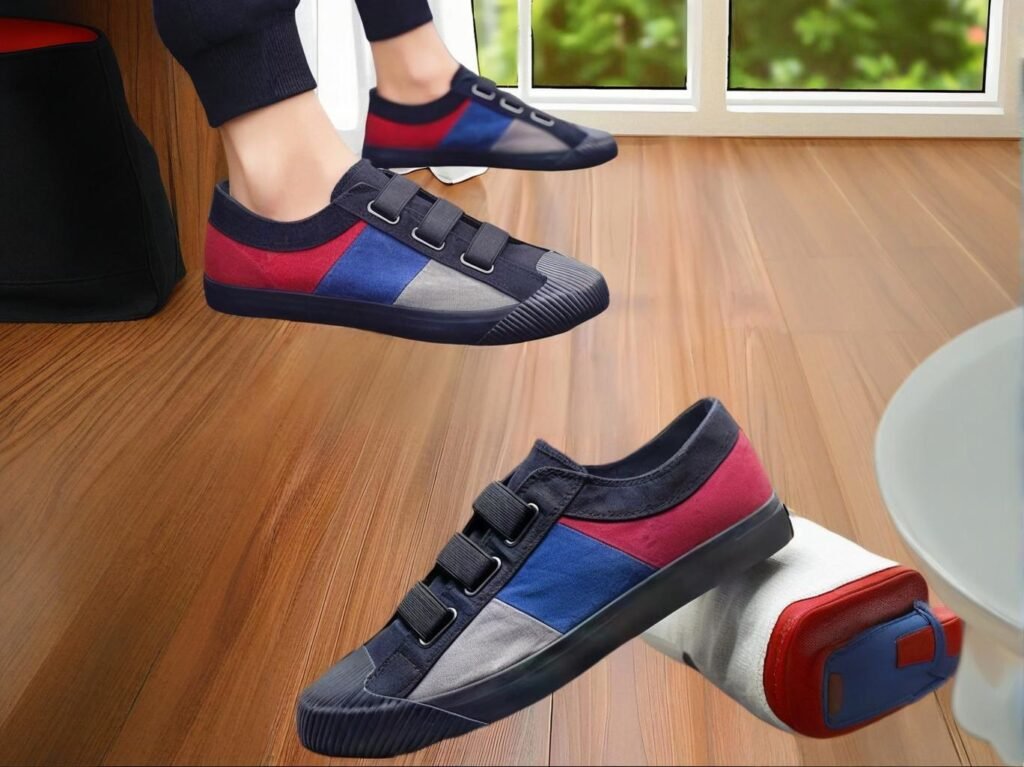
In industrial manufacturing, a single untreated fabric rarely meets the diverse safety and performance demands of different sectors. This is why canvas is prized—it’s not just strong in its raw form, it’s also highly adaptable through targeted treatments. With the right finishing processes, a single base fabric can become fire-retardant, waterproof, UV-resistant, mold-proof, or even anti-static—allowing manufacturers to fine-tune properties to exact project specifications.
In other words, canvas isn’t one fabric—it’s a platform that can be engineered for heavy-duty construction sites, marine-grade covers, oil field operations, event structures, and more.
Direct Answer for Industrial Buyers
Yes—canvas materials can be customized for fire retardancy, waterproofing, UV protection, mildew resistance, and anti-static performance through coatings, fiber blends, or chemical treatments applied during production or post-processing. These treatments not only extend fabric lifespan but also ensure compliance with regional safety codes like NFPA 701 (USA) or EN 13501-1 (EU).
Common Custom Treatments for Industrial Canvas
| Treatment Type | Performance Benefit | Typical Industrial Use |
|---|---|---|
| Flame Retardant (FR) | Inhibits ignition, slows flame spread | Welding curtains, scaffold wraps, FR tents |
| PU/PVC Coating | Waterproof, oil-resistant, chemical barrier | Tarpaulins, truck covers, marine canopies |
| UV Stabilization | Slows fading, preserves tensile strength | Outdoor covers, awnings, event structures |
| Mold/Mildew Resistance | Inhibits fungal growth in damp climates | Marine covers, agri-shade cloths, storage wraps |
| Anti-Static | Prevents electrostatic discharge | Electronics cleanrooms, sensitive equipment covers |
| Acrylic Coating | Weatherproofing with color retention | Outdoor signage, architectural canvas |
Customization Capability Matrix
| Canvas Base Type | FR Ready | Waterproof Ready | UV Resistance | Breathable | Eco-Friendly |
|---|---|---|---|---|---|
| 100% Cotton | ✔ | ✔ (with coating) | Low–Medium | ✔✔✔ | ✔✔✔ |
| Poly-Cotton Blend | ✔ | ✔ (PU/PVC) | Medium–High | ✔✔ | ✔✔ |
| 100% Polyester | ✔ | ✔ (built-in) | High | Low | Low |
| Waxed Cotton | ✘ (wax is flammable) | Moderate (wax-based) | Low | ✔✔✔ | ✔✔✔ |
Note: “FR Ready” means the fiber structure is compatible with flame-retardant finishing without significant degradation of mechanical strength.
Use-Driven Treatment Combinations
| Industry / End Use | Required Treatments | Recommended Canvas |
|---|---|---|
| Military-grade tents | FR + Waterproof + UV | 16 oz poly-cotton PU-coated |
| Oil & Gas operations | FR + Anti-static + Mold-resist | 18 oz FR cotton duck canvas |
| Outdoor furniture covers | UV + Waterproof | 14 oz polyester canvas |
| Warehouse tarps | Waterproof + Mold protection | 12 oz coated cotton canvas |
| Aviation ground covers | FR + Waterproof + Oil-resist | 17 oz double-PU-coated poly-cotton |
Real-World Case Study
A U.S. airport ground services supplier required 600 meters of FR-certified canvas capable of repelling jet fuel mist and resisting intense UV exposure.
- Solution: SzoneierFabrics developed a 17 oz poly-cotton blend with dual PU coatings (inside for waterproofing, outside for oil resistance) and NFPA 701 certification.
- Outcome: The tarps performed flawlessly for 18 months under continuous tarmac exposure—zero fabric failures and reduced cleaning downtime by 22%.
Buyer Considerations Before Customizing Canvas
- Weight Impact: Treatments can increase fabric weight by 10–20%, affecting handling and installation.
- Compatibility: Some treatments conflict—e.g., wax coatings reduce adhesion for PVC or PU layers.
- Certification Needs: Always request lab reports for flame resistance, tensile strength, and weathering tests.
- Sewability & Flexibility: Heavy coatings may reduce foldability or require heavy-duty sewing machines.
- Maintenance Requirements: Some finishes (e.g., wax) need reapplication after extended outdoor use.
Expert Tip for Procurement
When specifying treated canvas, start from the environmental challenge (e.g., salt spray, heat, UV, sparks) and work backward to select the fiber base + treatment package. This ensures the end product meets both mechanical performance targets and compliance standards without unnecessary weight or cost.
How to Choose the Right Type of Canvas Fabric for Different Manufacturing Needs?
With the sheer range of canvas weights, fiber blends, weaves, and treatments available on the market, making the right choice can feel overwhelming—especially when product performance, safety compliance, and cost control are all on the line. In modern manufacturing, picking the wrong canvas spec doesn’t just affect durability—it can increase returns, cause compliance failures, and inflate total lifecycle costs.
Choosing the right canvas isn’t just about asking “cotton or polyester?”—it’s about matching the technical profile of the fabric to the environmental, mechanical, and operational demands of the product you’re making.
Direct Answer for Decision-Makers
To choose the right canvas fabric, manufacturers must evaluate weight, weave, fiber composition, treatments, environmental exposure, and required certifications—then balance performance with cost and production compatibility.
Key Parameters to Evaluate
| Parameter | Why It Matters | Recommended Range / Consideration |
|---|---|---|
| Weight (GSM / oz) | Heavier weights offer more durability but reduce flexibility | Light-duty: 7–12 oz; Medium-duty: 12–16 oz; Heavy-duty: 16–20 oz |
| Weave Density | Higher density improves abrasion resistance and print sharpness | Look for tight duck or twill weaves for rugged use |
| Fiber Type | Determines UV stability, water resistance, and mold resistance | Cotton for breathability, Polyester for UV/water resistance, Blends for balance |
| Coating/Treatment | Adds performance (e.g., FR, PU waterproofing, UV stabilization) | Match coating to actual environment |
| Certification | Ensures legal and safety compliance in target markets | FR (NFPA 701, CPAI-84), REACH, RoHS, ISO tensile testing |
Quick Canvas Selector Table
| End Use Case | Ideal Canvas Specification | Why It Works |
|---|---|---|
| Reusable Tool Bags | 12 oz cotton duck canvas | Flexible, abrasion-resistant, easy to stitch |
| Scaffolding Wraps | 16–18 oz FR-treated poly-cotton | Meets fire codes, resists tearing in high winds |
| Luxury Tent Structures | 14 oz UV + water-resistant poly-canvas | Aesthetic, weatherproof, durable |
| Marine Enclosures | 16 oz UV-stabilized, mildew-proof polyester | Saltwater-resistant, long outdoor lifespan |
| Truck Tarpaulins | 18 oz PVC-backed ripstop canvas | Waterproof, tear-proof under high tension |
| Outdoor Banners / Awnings | 10 oz PU-coated printable canvas | Lightweight, printable, weatherproof |
Tips for First-Time Buyers
- Request Physical Samples: Check hand feel, stitchability, and finish in real-world conditions.
- Check Roll Widths: Industrial rolls typically range from 58–63 inches; plan cutting layouts to reduce waste.
- Account for Shrinkage: Untreated cotton can shrink 2–5%—always confirm pre-shrunk or treated specs if size accuracy is critical.
- Review MOQ & Lead Times: Special coatings may add 10–15 days to production; order accordingly.
- Ask About After-Treatment Testing: FR, waterproofing, and UV treatments should come with batch-specific lab reports.
Procurement Decision Flow
- Define the Environment – Indoors, outdoors, high UV, saltwater, high heat?
- Set the Compliance Targets – Does it need FR certification, food safety approval, or REACH compliance?
- Match Weight to Duty Level – Avoid over-specifying heavy fabrics for lightweight needs.
- Select Coating/Treatment – Only choose what’s necessary; avoid incompatible combos like wax + PVC.
- Confirm Logistics & MOQ – Ensure suppliers can maintain consistency across multiple batches.
Sourcing Partner Advice
At SzoneierFabrics, we work as an extension of your production team—helping you translate product performance requirements into the exact canvas specification that delivers on durability, compliance, and cost-efficiency.
- Free Material Consultation: Understand weight, fiber, and coating options before committing.
- Lab-Certified Treatments: FR, UV, mold-proofing, waterproofing, and anti-static options available.
- Flexible MOQ: From 300 meters for prototype runs to 5000+ meters for seasonal mass production.
- Consistency Guarantee: Batch-to-batch uniformity in weave density, weight, and finish.
Canvas Fabric That Powers Modern Manufacturing
Canvas has evolved far beyond its origins as sailcloth. Today, it’s an engineered industrial textile—capable of meeting stringent fire codes, high UV exposure, marine-grade mildew resistance, and extreme mechanical stress. From a flame-retardant welding curtain in a steel plant to a waterproof boat cover in a tropical marina, the right canvas not only protects—it performs.
At SzoneierFabrics, we see canvas as more than a fabric—it’s a strategic choice for manufacturers who need reliability, adaptability, and sustainability in one package. With tailored specs, short lead times, and global delivery, we help product developers, operations managers, and procurement teams turn raw material into high-performance products.
Need Expert Help Selecting Your Canvas? Contact SzoneierFabrics today to request free swatches, explore custom finishes, or get a technical spec recommendation for your next project.
